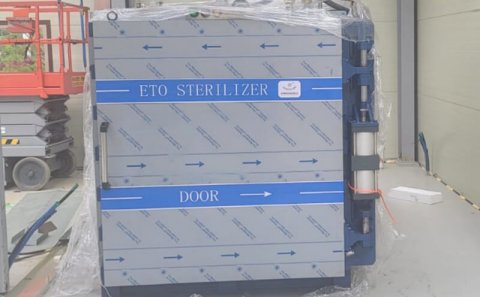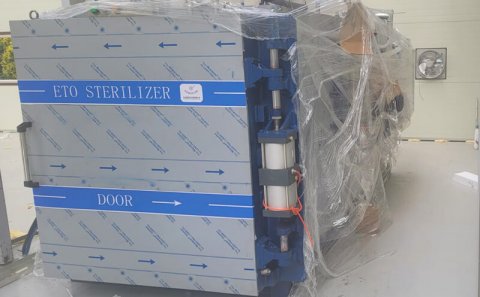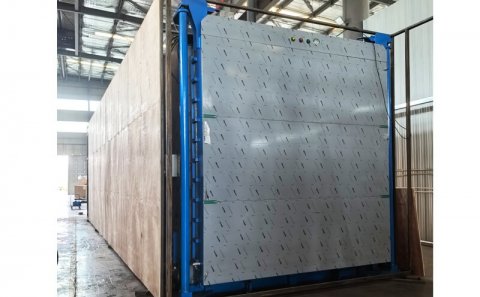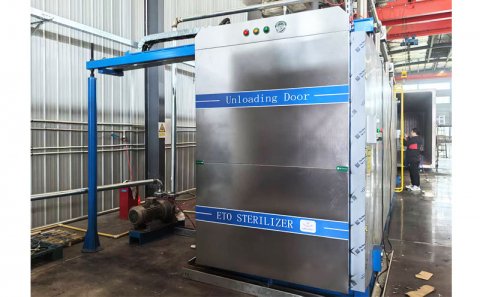Three Phases of ethylene oxide sterilization.
The combined factors to maintain EO safety include:
-
Reasonable design, installation and maintenance of system and equipment;
-
Comply with applicable occupational health and safety regulations and environmental regulations;
-
Development and implementation of system and procedure of safe production habit
-
Atmospheric monitoring in any area where EO exposure may occur
Use personal monitoring devices when applicable
personnel training
Regular review of equipment, personnel and processes to ensure compliance with design specifications and agency policies and procedures at all times.
Preconditioning Phase
-
1)The air circulation pattern of the entire pretreatment area with sterilized product (loading) should be determined. This can be done by smoke testing combined with calculation of air change rate and wind measurement.
-
2)The temperature and humidity of the whole pretreatment area shall be monitored over a long enough period to prove that the temperature and humidity can be maintained within the specified range. Temperature and humidity shall be measured at multiple locations throughout the pretreatment area.
Sterilization Phase
-
1)If inert gases are used instead of EO, account should be taken of the differences in the relative heat capacity when assessing the results.
-
2)Temperature/humidity distribution: Temperature/humidity sensors should be located in those locations that are likely to represent the maximum temperature differential, such as locations near unheated portions of the chamber or door and locations near steam or gas entry ports. The remaining temperature sensors should be distributed evenly throughout the usable chamber volume.
-
NOTE See Table C.1 for the recommended number of sensors.
-
3)In empty chamber OQ exercises, the recorded temperature range, within the usable chamber volume during EO or inert gas exposure, of ± 3 °C of the average recorded chamber temperature at each time point should be obtained after an equilibration period. When the OQ exercise is carried out using a loaded chamber, then the ± 3 °C tolerance might not be achievable.
-
4)chamber leak rate (performed either under vacuum for subatmospheric cycles or under vacuum and at pressure for superatmospheric cycles);
-
5)pressure rise on injection of steam during the conditioning phase;
-
6)the temperature of the injected EO-gas should be within the volatizer specification or above the boiling point of EO (10,7°C at atmospheric pressure);
-
7)pressure rise and rate of attainment on admission of EO and correlation of factors with which it is intended to monitor EO concentration;
-
8)depth and rate of attainment of vacuum used to remove EO;
-
9)pressure rise and rate of attainment of pressure on admission of air (or other gases);
-
10)number of times these last two stages are repeated and any variations in successive repetitions;
-
11)the reliability of the supply of filtered air, inert gasses, water and steam;
-
12)replicate cycles should be carried out to demonstrate the repeatability of control;
-
13)a chamber wall temperature study should be completed to verify adequate temperature uniformity provided by the jacket heating system. The study should characterize the temperature profile for comparison on a periodic basis to ensure the system continues to operate effectively.
Aeration Phase
When performing aeration, the temperature profile of the aeration area should be determined in the same manner as recommended for preconditioning areas. The air flow rates and air flow patterns through the area should also be determined.
Jun 22, 2025
view: 1168
Sterilize machine This cabinet is generally used for hospital disinfection. The ethylene oxide sterilizer is a special equipment for fumigating and sterilizing the articles closed in the sterilization room under certain temperature, pressur...
Read More
Jun 17, 2025
view: 1435
Requirement of small and medium-sized ethylene oxide sterilizers The requirements for medium-sized and small-sized ethylene oxide sterilizers are: good pressure resistance and airtight performance, capable of withstanding 1.25 times of work...
Read More








